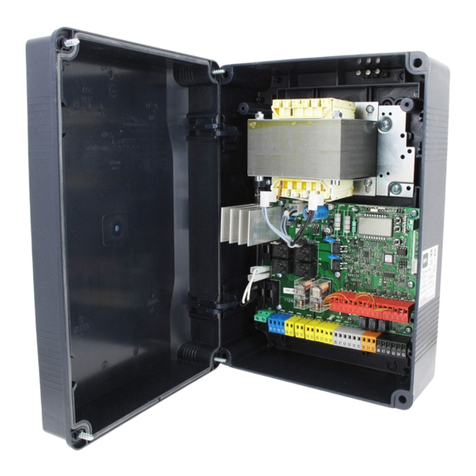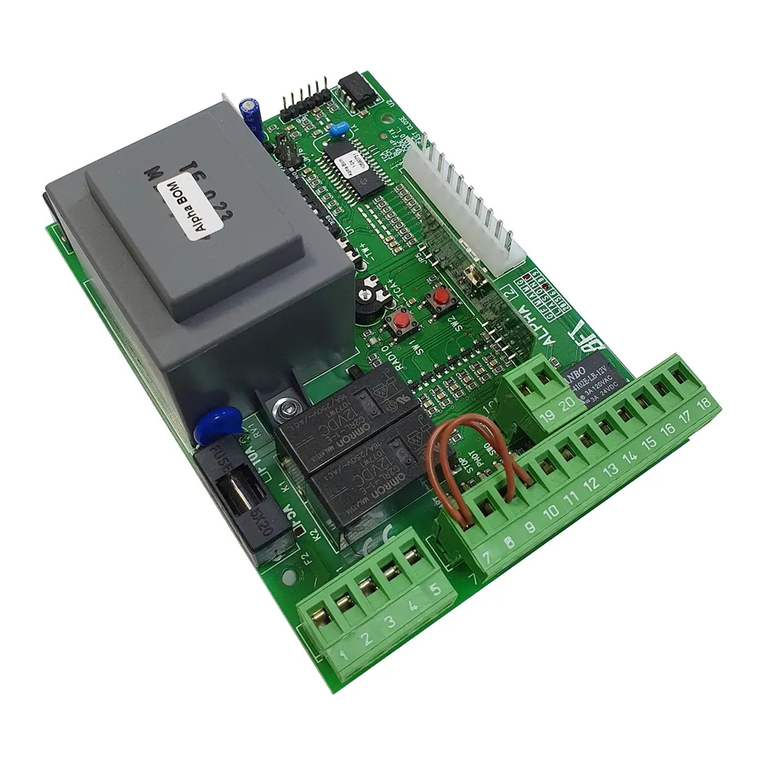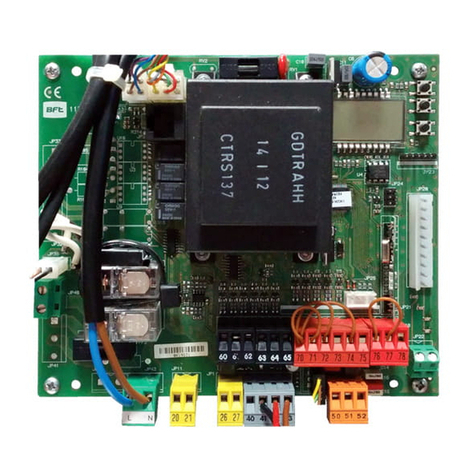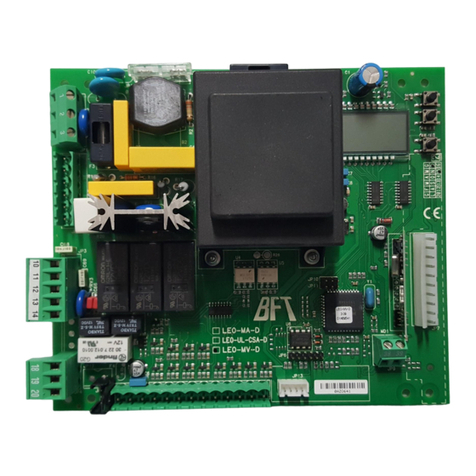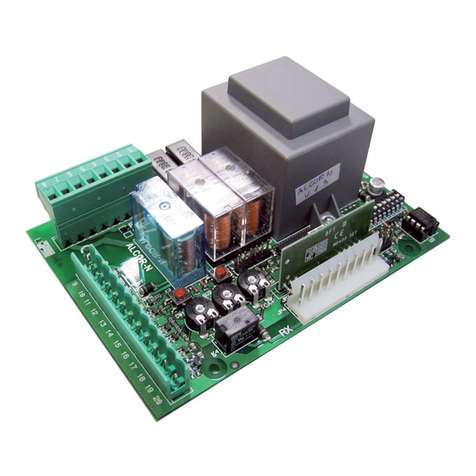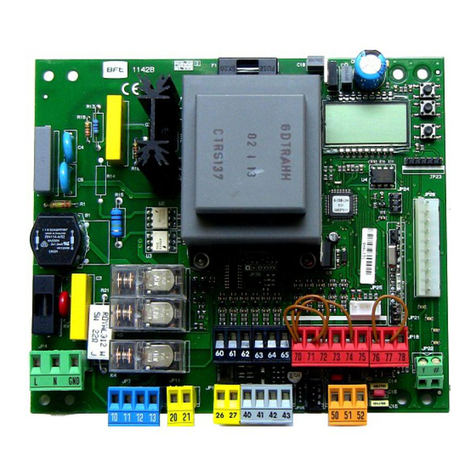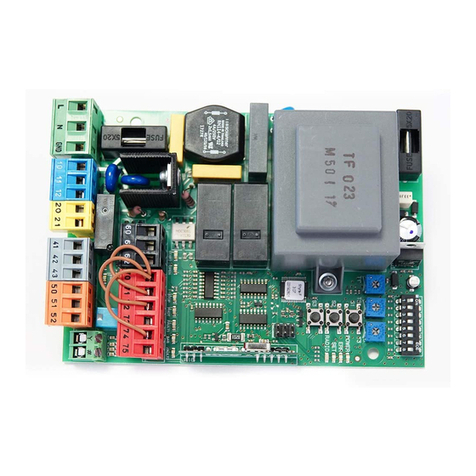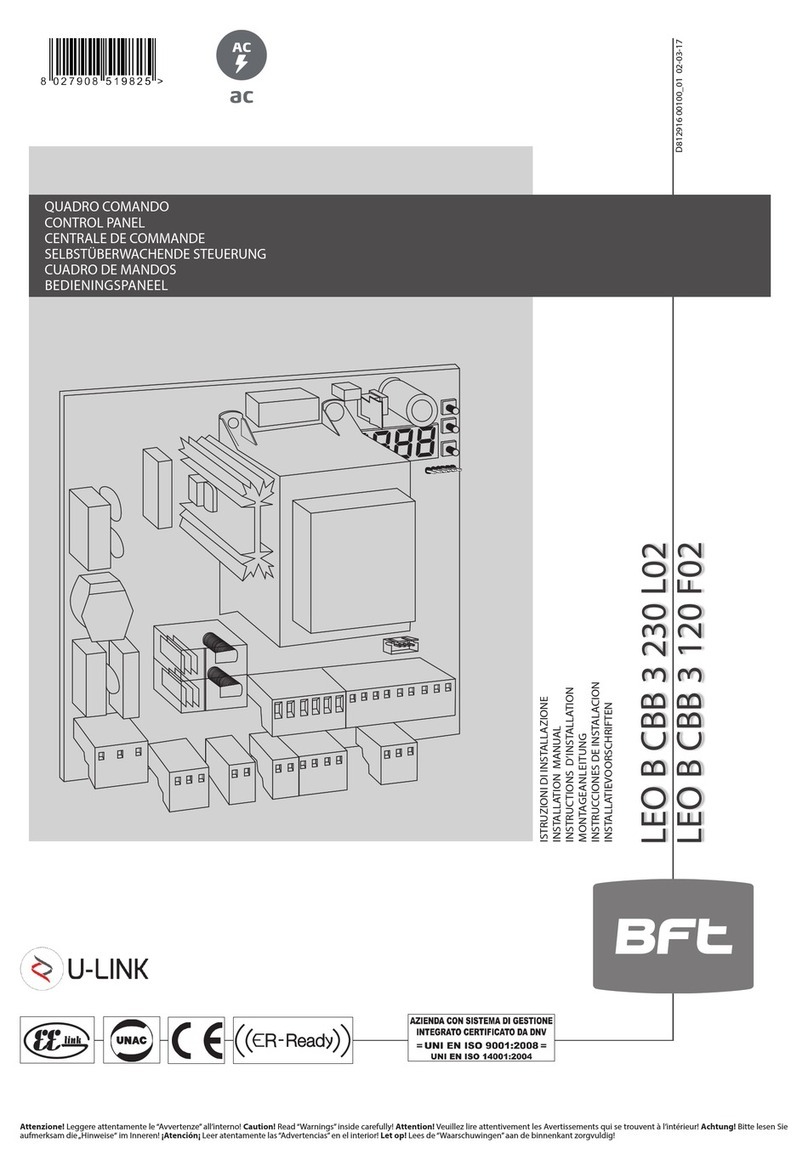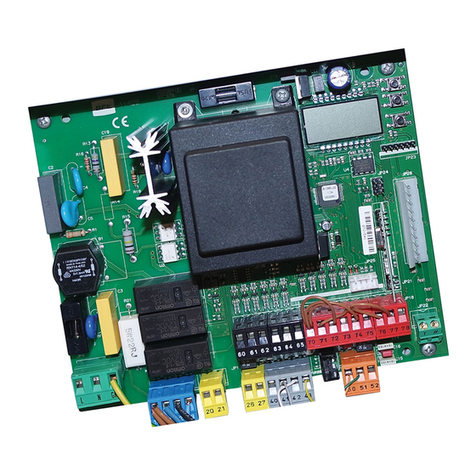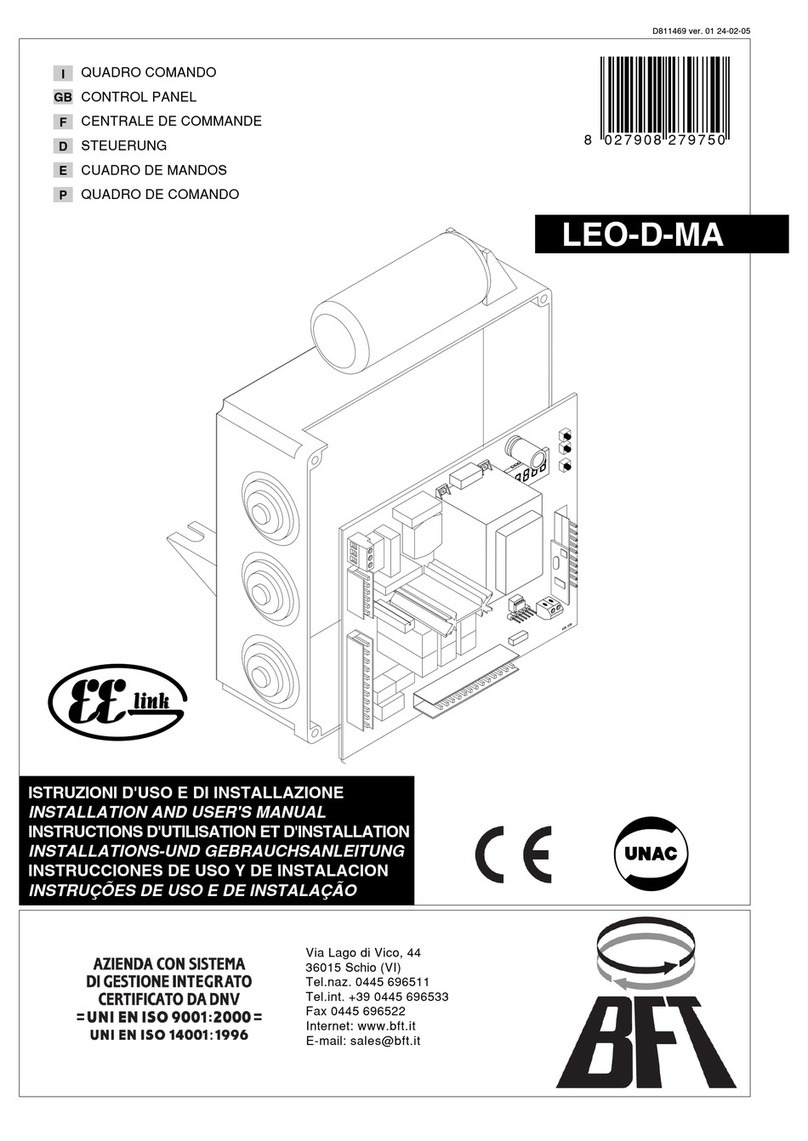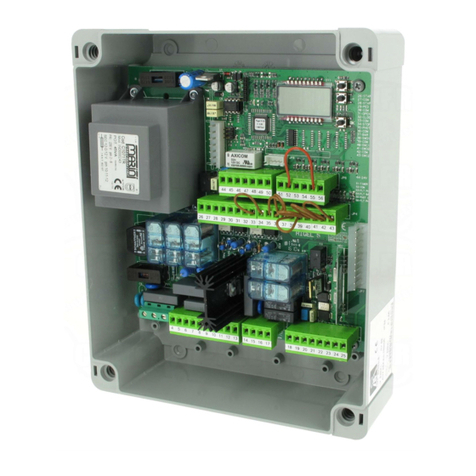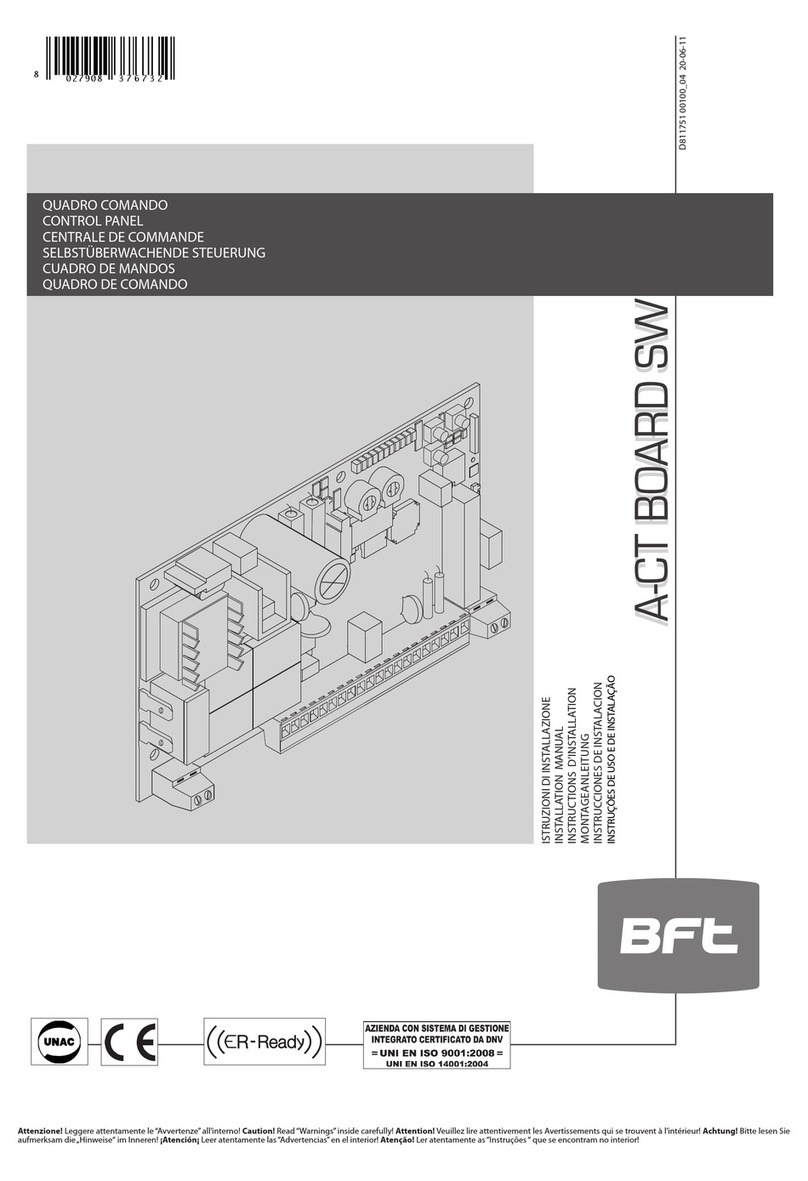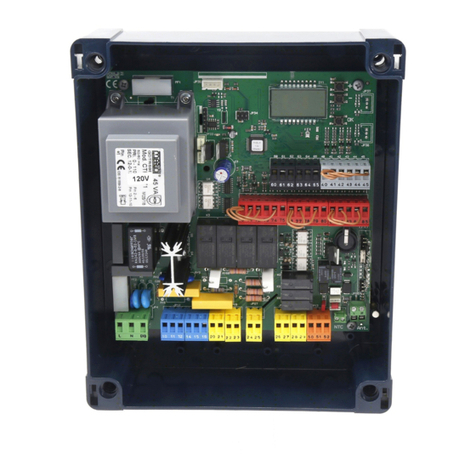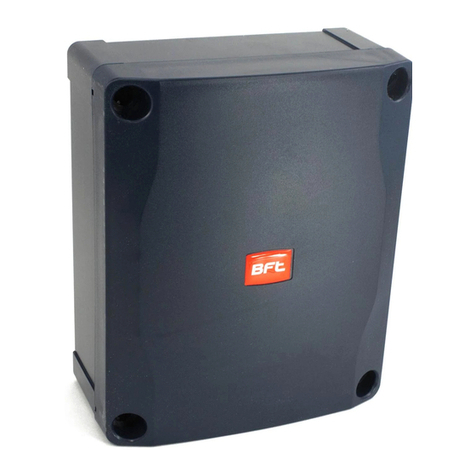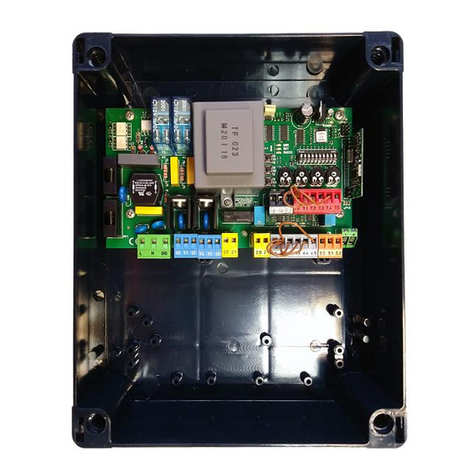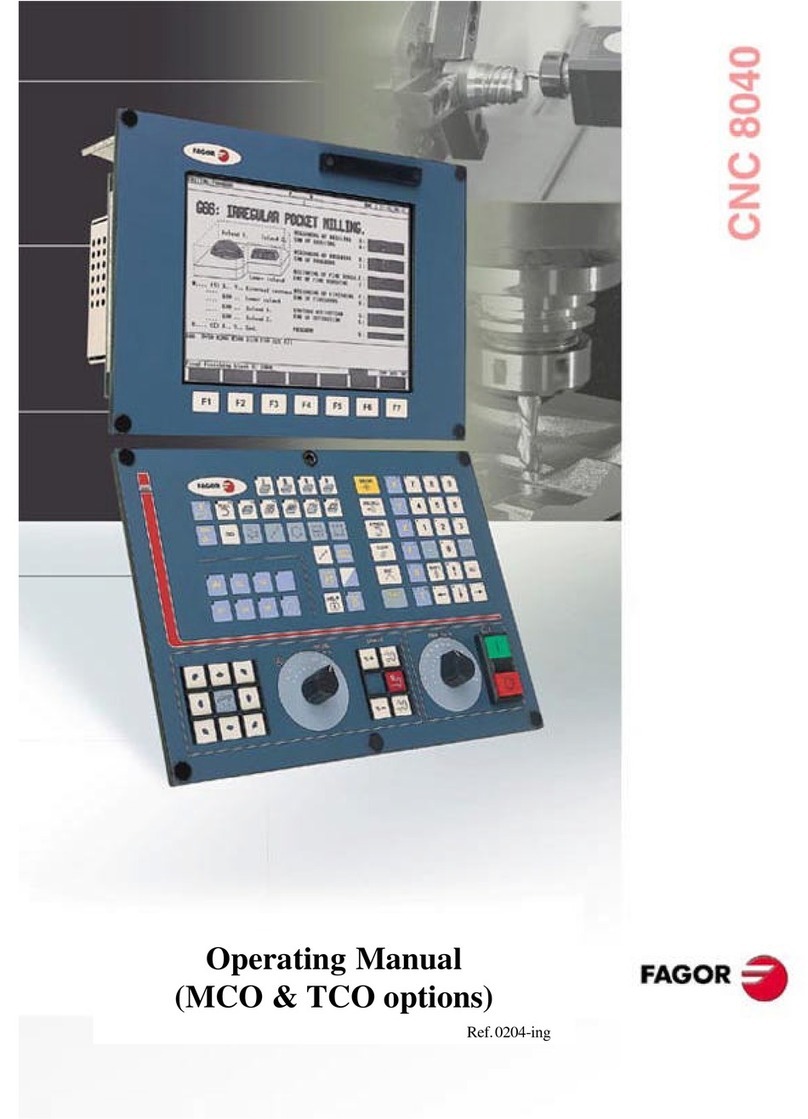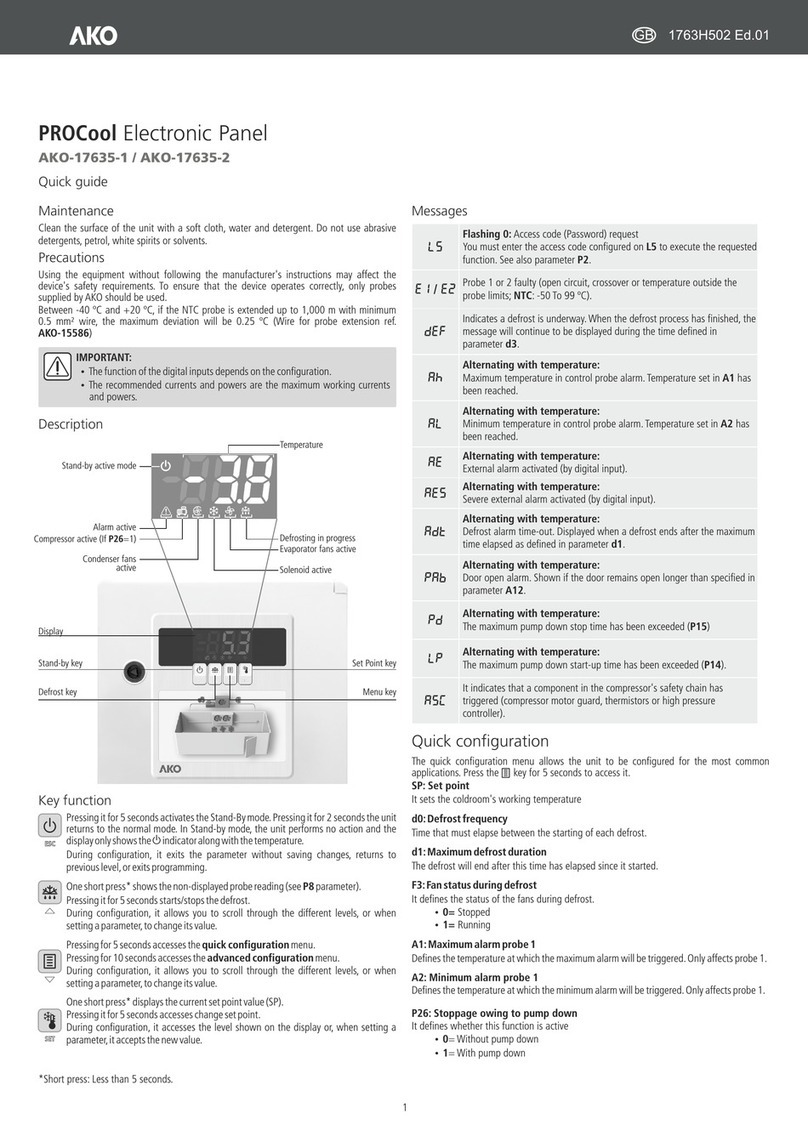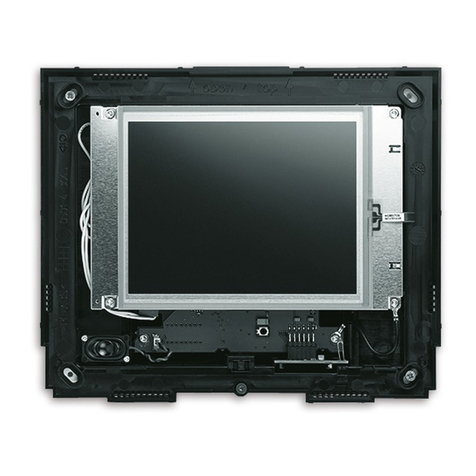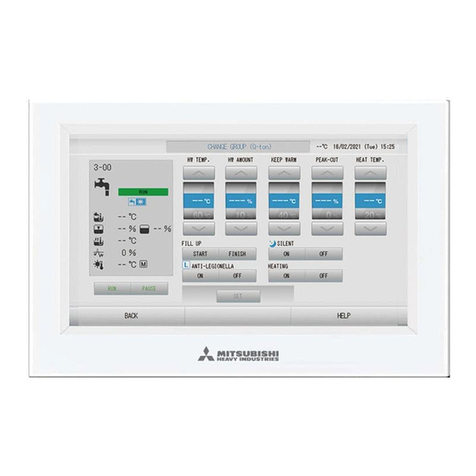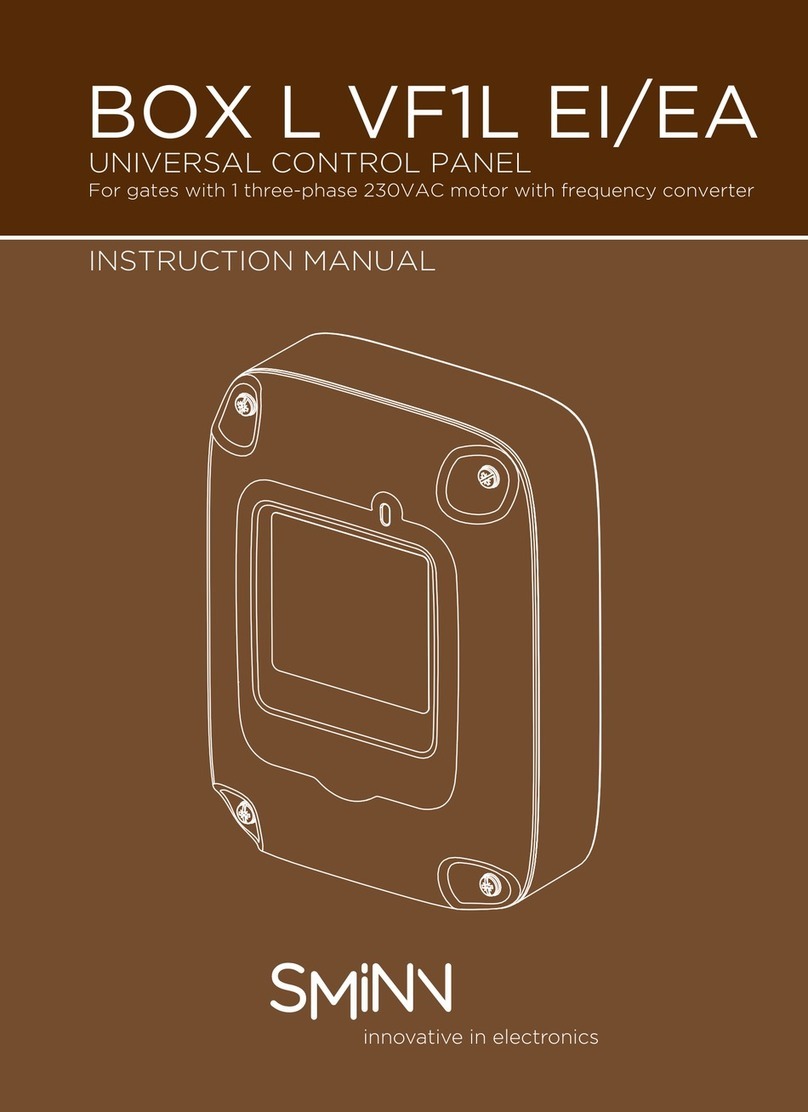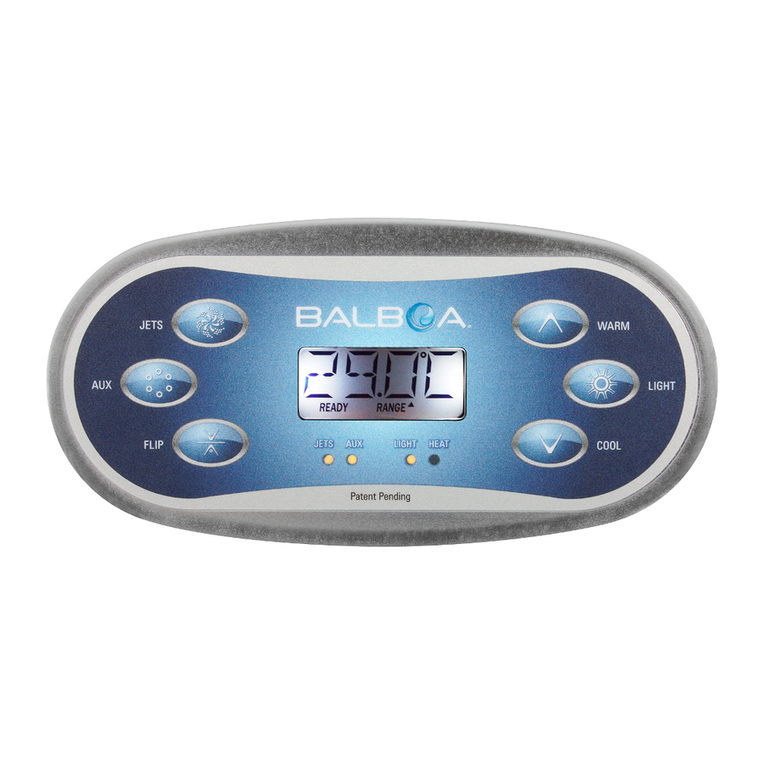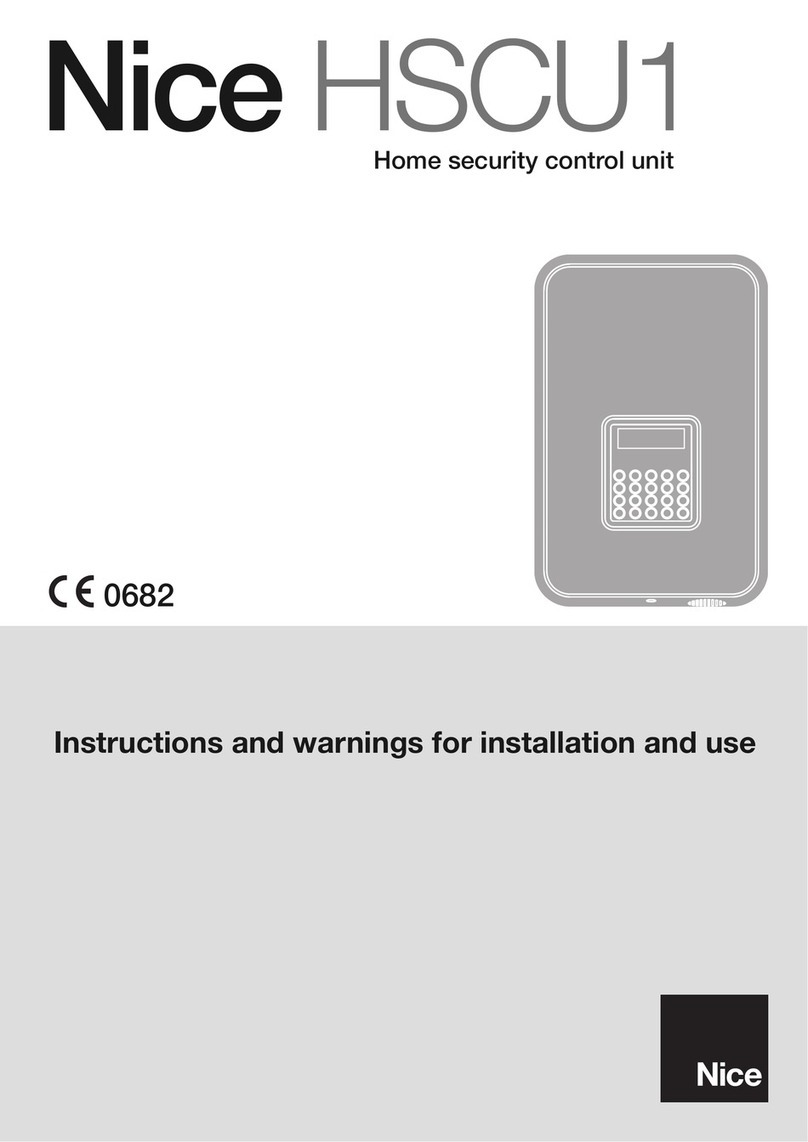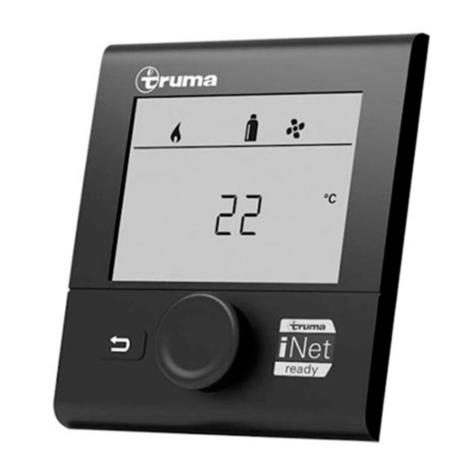
ALTAIR-P - Ver. 03 - 5
D811506_03
MANUAL DE USO ESPAÑOL
Al agradecerle la preferencia que ha manifestado por este producto, la empresa está
segura de que de él obtendrá las prestaciones necesarias para sus exigencias.
Lea atentamente el “Manual de Instrucciones” que lo acompaña, pues proporciona
importantes indicaciones referentes a la seguridad, la instalación, el uso y el man-
tenimiento.
Este producto cumple los requisitos establecidos por las normas reconocidas de la
técnica y las disposiciones relativas a la seguridad, y es conforme a las siguientes
directivas europeas: 89/336/CEE, 73/23/CEE y modificaciones sucesivas.
1) DATOS GENERALES
El cuadro de mandos ALTAIR-P es adecuado para cancelas batientes.Es suministrado
por el constructor con configuraciones funcionales standard. Cualquier variación debe
configurarsemedianteelprogramadorcondisplayincorporado omediante
programador
de bolsillo universal
. La Central soporta completamente el protocolo EELINK.
2) FUNCIONES
PARA EL INSTALADOR: Es aconsejablerellenar latabla conlosparámetrosconfigura-
dos, con el objeto de facilitar futuras modificaciones y operaciones de mantenimiento.
Entre paréntesis cuadrados [ ], están indicados los valores de fábrica. En las lógicas
de funcionamiento, [ OFF ] indica opción no activada, ON indica opción activada.
MENU PARAMETROS
Tiempo de trabajo [10s] ___
Tiempo de Trabajo peatonal [ 6s ] ___
Tiempo de Cierre Automático [10s] ___
Tiempo de defasaje hojas en fase de apertura [ 1s] ___
Tiempo de defasaje hojas en fase de cierre [ 1s] ___
Par (fuerza de empuje) motores [50%] ___
Dirección de zona para mandos centralizados [ 0 ] ___
MENU LOGICAS
Cierre automático activado (TCA) [ OFF ] ___
Lógica de funcionamiento de 3 Pasos [ OFF ] ___
Bloquea Impulsos [ OFF ] ___
Prealarma [ OFF ] ___
Cierre rápido tras intervención fotocélulas [ OFF ] ___
Fotocélulas en fase de apertura [ OFF ] ___
Luz de aviso de cancela abierta o II° canal radio [ OFF ] ___
Accionamiento de un solo motor [ OFF ] ___
Golpe de ariete en fase de apertura [ OFF ] ___
Radiorreceptor con código fijo [ OFF ] ___
Prog. Radio [ ON ] ___
Tarjeta master para mandos centralizados [ OFF ] ___
START-OPEN [ OFF ] ___
PED-CLOSE [ OFF ] ___
3) DEMOLICION
Atención: Sírvase exclusivamente de personal cualificado.
La eliminación de los materiales debe hacerse de conformidad con las normas vigen-
tes. En caso de demolición, no existen particulares peligros o riesgos que deriven del
producto mismo.
Es oportuno, en caso de recuperación de los materiales, que se separen por tipos
(partes eléctricas, cobre, aluminio, plástico, etc.).
4) DESMANTELAMIENTO
Atención: Sírvase exclusivamente de personal cualificado.
En el caso de que la central se desmonte para después volver a montarla en otro lugar,
hay que realizar lo siguiente:
• Cortar el suministro de corriente y desconectar toda la instalación eléctrica.
• En el caso de que algunos componentes no se puedan sacar o resulten dañados,
será necesario sustituirlos.
5) ADVERTENCIAS
Es necesario:
• Asegurarse de que haya, en la red de alimentación del automatismo, un interruptor
o un magnetotérmico omnipolar con una distancia de abertura de los contactos
igual o superior a 3,5 mm.
• Asegurarse de que haya, antes de la red de alimentación, un interruptor diferencial
con un umbral de 0,03 A.
• Asegurarse de que los dispositivos de seguridad aplicados a la cancela estén
siempre en función; en caso contrario, habrá que cortar el suministro de corriente,
desbloquear los motores y dirigirse enseguida a personal cualificado.
• Asegurarse de que la toma de tierra se haya realizado correctamente.
• No permitir que niños o adultos estacionen en el campo de acción del automatismo.
• No dejar radiomandos u otros dispositivos de mando al alcance de los niños para
evitar el accionamiento involuntario del automatismo.
• Elusuariodebeevitar cualquierintentodeintervenciónoreparacióndel automatismo
y dirigirse exclusivamente a personal cualificado.
El buen funcionamiento del operador resulta garantizado únicamente si se
respetan los datos contenidos en este manual de instrucciones. La empresa
no responde de los daños causados por el incumplimiento de las normas de
instalación y de las indicaciones contenidas en este manual.
Las descripciones y las ilustraciones del presente manual tienen un carácter
puramente indicativo.Dejando inalteradas las características esenciales del pro-
ducto,la Empresa se reserva la posibilidad de aportar,en cualquier momento,las
modificaciones que considere convenientes para mejorar técnica, constructiva y
comercialmente el producto, sin la obligación de poner al día esta publicación.
MANUAL PARA DE USO PORTUGUÊS
Agradecendolhe pela preferência dada a este produto, a Empresa tem a certeza que
do mesmo obterá as prestações necessárias ao seu uso.
Leia atentamente o opúsculo ”Manual de instruções” que o acompanha, pois que
esse fornece indicações importantes respeitantes a segurança, a instalação, o uso
e a manutenção.
Este produto está em conformidade com as normas reconhecidas pela técnica e pelas
disposições relativas à segurança.Confirmamos que o mesmo está em conformidade
com as seguintes directivas europeias: 89/336/CEE, 73/23/CEE e suas modificações
sucessivas.
1) GENERALIDADES
O quadro de comandos ALTAIR-P é ideal para os portões de batente. É fornecido pelo
construtor com configurações funcionais standard.Toda e qualquer variação, deve ser
definida através do programador com display incorporado ou através de programador
palmar universal. A Central suporta completamente o protocolo EELINK.
2) FUNÇÕES
PARA O INSTALADOR: preencher a tabela com os parâmetros definidos, para facilitar
a execução de futuras modificações e manutenções.
Entre parênteses quadrados [ ] estão indicados os valores de fábrica. Para as lógicas
de funcionamento, [ OFF ] indica opção não activa, [ ON ] indica opção activa.
MENU PARÂMETROS
Tempo de trabalho [10s ] ___
Tempo de Trabalho postigo [ 6s ] ___
Tempo de Fecho Automático [10s ] ___
Tempo desfasamento das folhas na abertura [ 1s ] ___
Tempo desfasamento das folhas no fechamento [ 1s ] ___
Binário (força de impulso) dos motores [ 50% ] ___
Endereço de zona para os comandos centralizados [ 0 ] ___
MENU LÓGICAS
Fechamento automático activo (TFA) [ OFF ] ___
Lógica de funcionamento de 3 Fases [ OFF ] ___
Bloqueia Impulsos [ OFF ] ___
Pré-alarme [ OFF ] ___
Fechamento rápido após fotocélulas [ OFF ] ___
Fotocélulas em abertura [ OFF ] ___
Indicador luminoso de portão aberto ou II° canal rádio [ OFF ] ___
Comando de um só motor [ OFF ] ___
Golpe de aríete na abertura [ OFF ] ___
Radiorreceptor de código fixo [ OFF ] ___
Prog. Radio [ ON ] ___
Placa master para comandos centralizados [ OFF ] ___
START-OPEN [ OFF ] ___
PED-CLOSE [ OFF ] ___
3) DEMOLIÇÃO
Atenção: Use exclusivamente pessoal qualificado.
A eliminação dos materiais deve ser feita respeitando-se as normas legais e técnicas
vigentes.Em caso de demolição, não existem perigos particulares ou riscos derivantes
do próprio produto.É oportuno, em caso da reciclagem dos materiais, que esses sejam
separados por tipologia (partes eléctricas, cobre, alumínio, plástico, etc.).
4) DESMANTELAMENTO
Atenção: Use exclusivamente pessoal qualificado.
No caso em que a central seja desmontada para depois ser remontada num outro
sítio, é necessário:
• Interromper alimentação e desligar todo o sistema eléctrico.
• No caso em que alguns componentes não possam ser removidos ou
estejam danificados, efectuar a substituição dos mesmos.
5) RECOMENDAÇÕES
• Acertar-se que na rede de alimentação da automatização, haja um interruptor ou
um magnetotérmico omnipolar com distância de abertura dos contactos igual ou
superior a 3,5 mm.
• Acertar-se que a montante da rede de alimentação, haja um interruptor diferencial
com limiar de 0.03A.
• Acertar-se que os dispositivos de segurança instalados no portão, estejam sempre
em boas condições de funcionamento; caso contrário, interromper a alimentação,
desbloquear os motores e consultar imediatamente pessoal qualificado.
• Acertar-se que instalação de terra tenha sido realizada correctamente.
• Não permitir que pessoas e crianças fiquem paradas no raio de acção da automa-
tização.
• Não deixe radiocomandos ou outros dispositivos de comando ao alcance de
crianças, para evitar accionamentos involuntários da automatização.
• O utilizador deve evitar de efectuar qualquer tentativa de intervenção ou de repa-
ração da automatização e servir-se unicamente de pessoal qualificado.
O bom funcionamento do operador é garantido, somente se forem respeitados
os dados contidos neste manual. A empresa não responde por danos provo-
cados pela inobservância das normas de instalação e das indicações contidas
neste manual.
As descrições e as ilustrações deste manual não constituem um compromisso.
Mantendo inalteradas as características essenciais do produto, a Empresa re-
servase o direito de efectuar em qualquer momento as modificações que julgar
convenientes para melhorar as características técnicas, de construção e comer-
ciais do produto, sem comprometerse em actualizar esta publicação.
